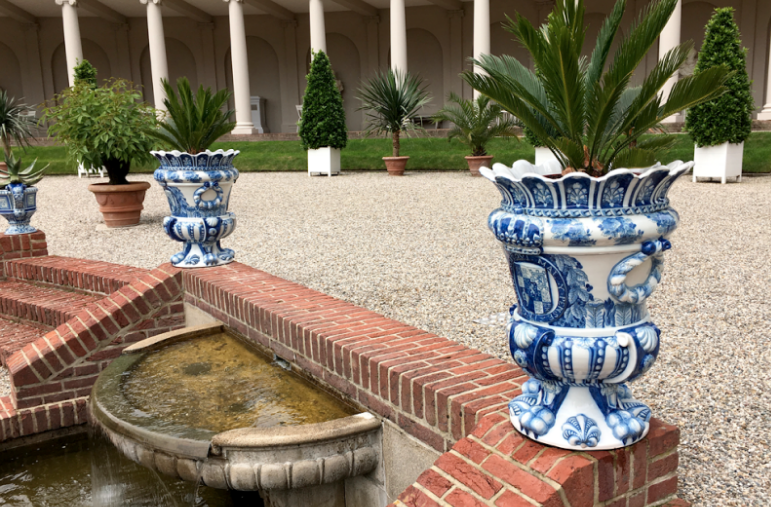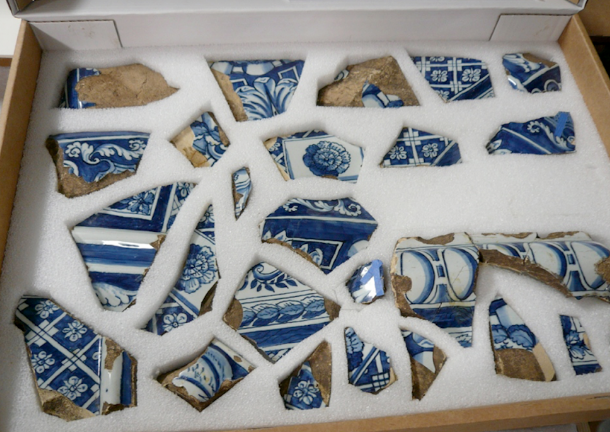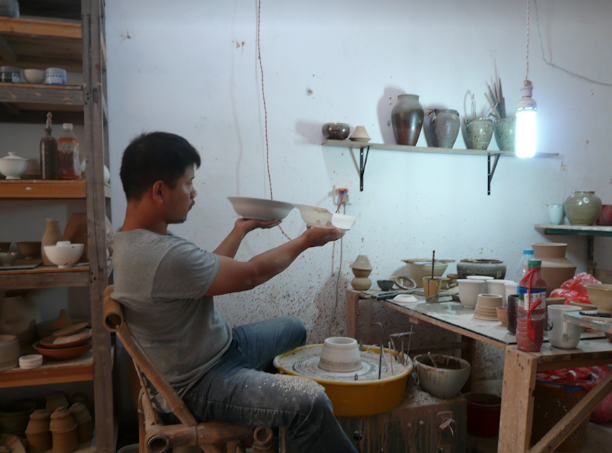China is famous for its blue and white porcelain, delicately and artfully produced and painted. Crafted mainly in the southern Chinese city of Jingdezhen and purchased by travelers visiting the East Asian markets, this porcelain also served as a popular export—from the 1600s on; in fact, up to 35 million pieces may have been exported by the Dutch East India Company. Now, designer Maaike Roozenburg is working with Delft University of Technology, not only to preserve an important heritage but also to bring forth beautiful 3D samples of originals for everyone to enjoy. A few years ago 3D printing maven Olivier van Herpt developed 3D printing for porcelain and the world’s first porcelain 3D printed pieces can be seen in The Gemeentemuseum in The Hague. Now Maaike and the University of Delft have come up with a way to scan and recreate ancient objects.
“The whole history of porcelain is fascinating,” says Roozenburg. “It’s this magical white material and something they invented in China. There was an obsession with it. Everyone wanted it, and in China, they started to really produce porcelain especially for western markets. All the royals in Europe loved it.”
Artists in the Netherlands were particularly fond of the Chinese porcelain and its classic design, and they created Delftware, an imitation which became its own brand.
“In the 17th century, ceramic Delftware vases decorated the gardens of royal Het Loo Palace in Apeldoorn,” Roozenburg says. “But they are all gone. Archeologists found some bits and pieces, and scientific proof that they were there, together with drawings and paintings.
“Thank God, at the time, royals gave these vases as presents to other royals!” says Roozenburg, commenting on the fact that only two were found—one in Erddig Hall in the UK, and the other in the museum of Schloss Favorite in Germany.
Unfortunately, administrators would not allow any vases to be taken out of the respective castles, so Roozenburg and her team traveled to them, bearing Artec 3D scanners in their backpacks and overcoming a variety of challenges, including scanning problems due to the reflective nature of the glass (overcome with the performance of the Artec Eva scanner).
The team also made practice vases first, using Styrofoam models to practice on:
“You don’t want any surprises when you’re in a castle in Britain and realize you have to improvise!” said Roozenburg.
“I think what’s amazing about scanning is that, by rendering physical objects that are really fragile, valuable, and have to stay within a museum into digital data, you can experiment with them,” says Roozenburg. “It gives new opportunities to work with historical objects that you otherwise would not be able to touch.”
Because handling of the objects is such a major issue due to worries over disintegration or items being broken, they created a round platform with a small motor—allowing the vase to be rotated and scanned via the Artec Eva, mounted on a tripod. Next, they used the Artec Space Spider for detailed ornamental parts like lions heads and shells. Once scanned, files were processed in MATLB and then 3D printed.
“The best thing is, in the end you can’t see that there was any new tech used. The finished work of 45 vases look like the originals, like they are brand new coming from the oven in the 17th century,” says Roozenburg.
With 3D scanning, users around the world are able to enjoy the benefit of making parts that need to be replaced, or that in some cases have become obsolete; here, everyone involved in the project is able to work with pieces that are hundreds of years old—and able to be handled without worry once they are transformed into 3D form.
“It’s culture,” says Technical University scanning expert Naagen. “We should make it accessible to people all over the world.”
Scanning equipment from Artec3D has been behind some of the most exciting projects involving artifacts over the past few years, involving archiving work with museums, preserving the first World War 1 monument, and much more. What do you think of this news? Let us know your thoughts! Join the discussion of this and other 3D printing topics at 3DPrintBoard.com.
[Source / Images: Artec 3D]Subscribe to Our Email Newsletter
Stay up-to-date on all the latest news from the 3D printing industry and receive information and offers from third party vendors.
Print Services
Upload your 3D Models and get them printed quickly and efficiently.
You May Also Like
New York DA Proposes Law to Stop Sharing Digital 3D Printed Gun Blueprints
A new bill in New York seeks to stop the spread of digital blueprints used to 3D print gun parts and auto sears. These small devices can turn a semi-automatic...
Australia Teacher Brought 3D Printed Gun to School, Police Say
Australian police are investigating a school teacher who allegedly brought a 3D printed handgun to school. According to official reports, the teacher, who works at a school in Canberra, did...
Daring AM: 3D Printed Guns Go From Homemade to Heavily Watched
As law enforcement intensifies its efforts and agencies roll out new regulations, 3D printed guns are becoming a bigger part of the ghost gun conversation. In March 2025, the U.S....
Supreme Court Says “Yes” to Regulating Ghost Guns—Including 3D Printed Guns
In a major decision today, the U.S. Supreme Court said that the government can treat ghost guns (including those made with 3D printers) like regular firearms. That means kits and...





































